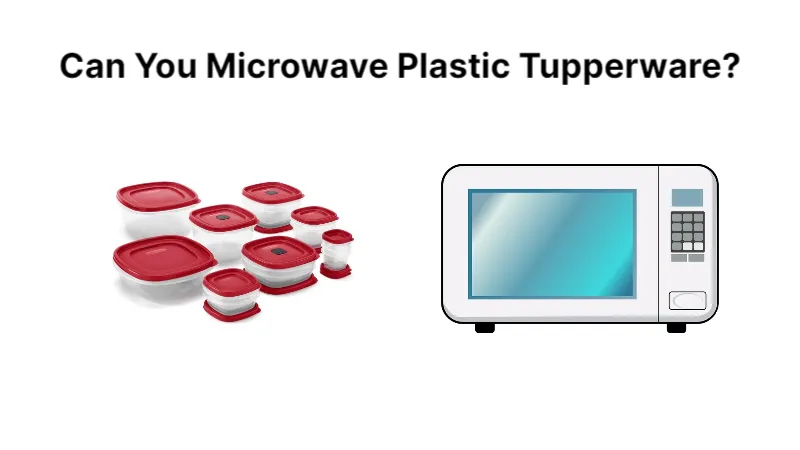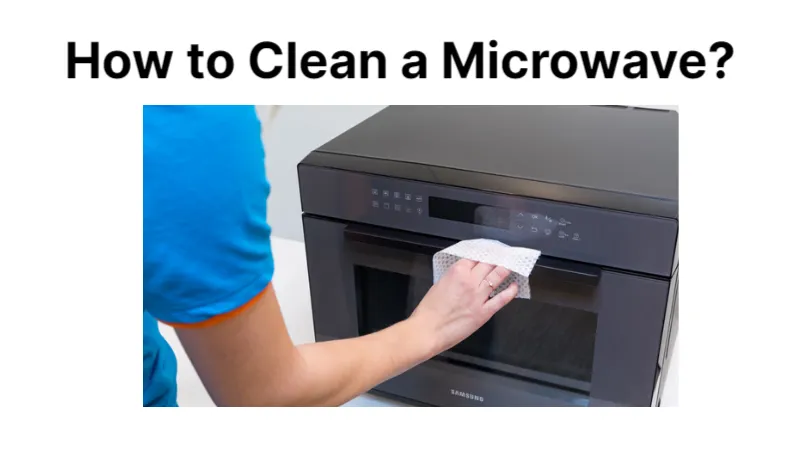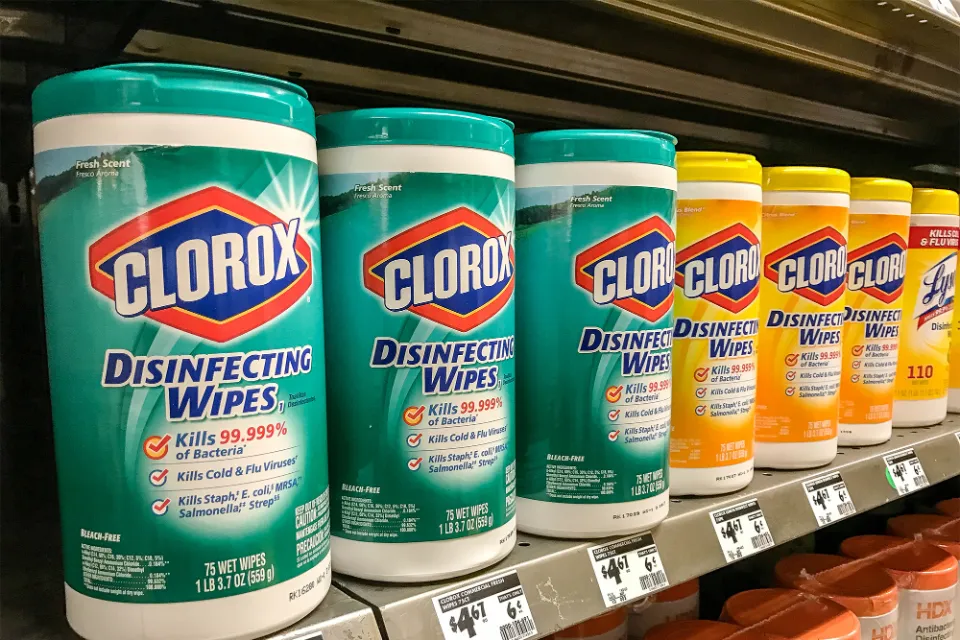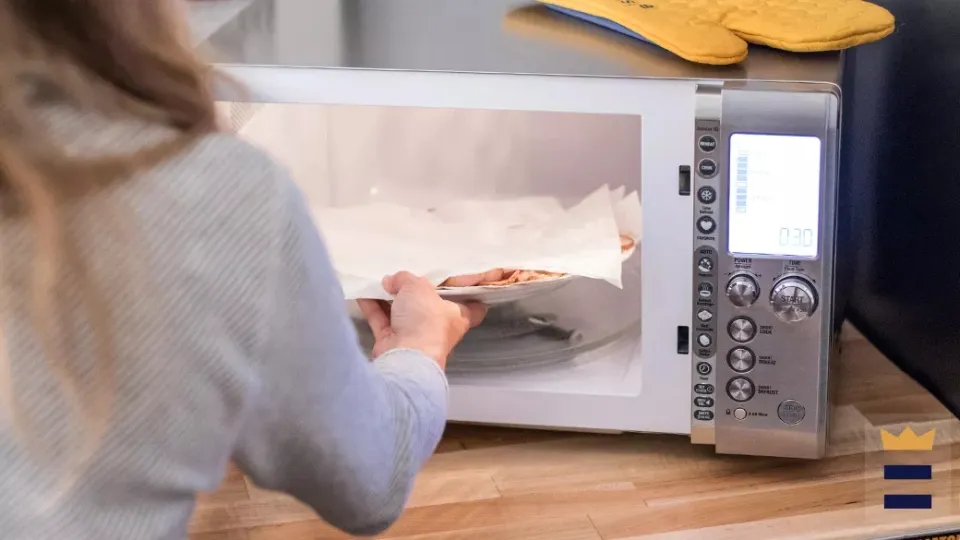Let’s started by Can You Microwave Plastic Tupperware?
Here’s the short answer: if the plastic You can microwave Tupperware as long as it has a microwave symbol imprinted on it or a label that says it is safe to do so. To find out how long it can be heated for and at what temperature, pay attention to the manufacturer’s instructions on the label.
Are All Tupperware Products Microwave Safe?
Microwave safety varies among Tupperware containers. The majority of plastic containers labeled “Tupperware,” and other brands that have become popular for microwaving will actually melt if they’re placed inside a microwave oven because they aren’t designed to be heated in the microwave.
A Tupperware chart of plastic container safety can also be used to determine which one is secure. The materials and plastic number of Tupperware products are listed; you should avoid plastics with the numbers 1, 3, 6, or 7. Number 2, 4, and 5 are safer plastics.
How Safe is Tupperware?
The Tupperware website states that all of their product lines, including their food storage containers and cooking oil containers, don’t contain any potentially harmful substances like BPA or polyethylene terephthalate. But is it true?
According to my research, even though Tupperware has sold BPA-free products since March 2010 in the US and Canada, some of its food storage containers still contain the plastic #7 polycarbonate, which has been shown to release BPA into food after repeated use.
To make sure you’re getting the safest Tupperware products, check out the chart of plastic types on their website and read the descriptions on the packaging.
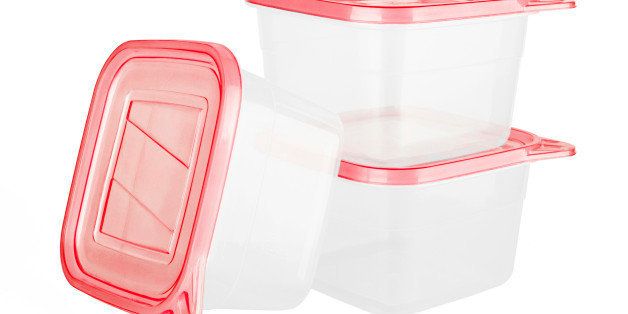
Can You Microwave Tupperware With a Lid On?
If you use a microwave-safe Tupperware container with specially made lids and a steam-vent feature, you can microwave Tupperware with a lid on. This method of microwaving food has the advantage of preventing spills and mess inside your microwave.
However, keep in mind that the vent needs to be opened before you microwave the Tupperware. Opening the vent will stop hot liquid from spilling out of your Tupperware and will stop steam from accumulating inside the plastic, which could lead to a hazardous pressure buildup.
Things to Know before Microwaving Tupperware Containers
A specific line of microwave-safe products is available from Tupperware. However, there are a few crucial insights regarding microwaveable Tupperware containers that must be understood.
“Except for the TupperWave Stack Cooker, Rock ‘N Serve, and CrystalWave reheatable products, microwave Tupperware products are not intended for cooking and are not advised for use in a microwave oven.”
Reheating certain foods with a high fat or sugar content is discouraged by the company. That particular food’s potential for heating up quickly and harming the containers is a risk.
In addition, manufacturer instructions clearly state that foods should be reheated in the microwave on medium heat for no longer than 3 minutes.
Remove the lid, pause the microwave at 3 minutes, and stir the food if it takes more time to heat the food. After that, restart the reheating for no more than three minutes.
Tips to Heating Food Safely Using Tupperware Food Containers in the Microwave
Here are a few guidelines you can use when using Tupperware in the microwave to make sure your food is heated safely.
- Avoid rough scrubbing or scratching the container. Harsh scrubbing can cause the coating to chip away and release toxic chemicals.
- Before you microwave the Tupperware, open the vent.
- Food should only ever be reheated for brief periods, no more than three minutes.
- Foods with a lot of fat or sugar should not be heated. These foods have a high heat tolerance.
- Repeated microwave heating of leftovers is not recommended.
- Use Tupperware only to reheat food; never cook in it.
- To microwave food, set the power to medium-high.
- Never go over the fill line.
- Always check the recycling number and use only Tupperware food containers with the labels 2, 4, and 5.
- If you do, make sure to use a microwave with a rotating control panel so the food is rotated evenly.
Read about
Tupperware Microwave Safe Symbol
Industrial manufacturers have access to a variety of plastic compounds. Then which plastics are employed in the Tupperware product line?
My concerns in regards to microwaving Tupperware containers are two fold:
- Plastic melting in the microwave
- Plastic leaching chemicals into food
To reduce the concern of microwaving, Tupperware has shared a comprehensive chart of plastics to help further understand the “Resin ID Codes” found in their extensive line of products.
There is only one way to determine whether the Tupperware container has microwave safety certification. Check the bottom of the container and look for the microwave safe symbol comprised of 3 wavy lines. Use caution when using plastic or Tupperware containers in the microwave if the bottom of the container lacks labels or symbols. Even storing food in it is not recommended!
Although there are many products in the Tupperware line that are not designed for cooking, Tupperware has furthered their research and developed an extensive line that is considered microwave safe and BPA-free. Actually, since March 2010, BPA has been removed from every product Tupperware sells in the US and Canada.
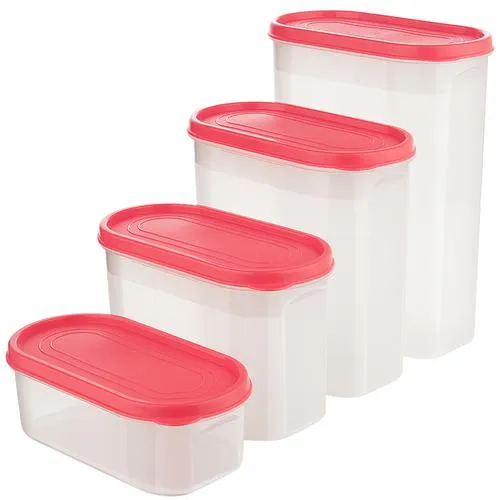
Is It Time to Toss Your Plastic Storage Collection?
Are you ready to discard your collection of plastic storage items now? Not necessarily. While all the above sounds a bit scary, consider the following:
Plastic is governed by the FDA. When it comes to plastic, the FDA makes certain decisions, such as determining how much of a chemical you can ingest without experiencing any negative effects. While it doesn’t necessarily stop some substances from being used in plastic, it does guarantee that the amounts are kept within an estimated safe range.
Both good and bad plastics exist. Safety varies among different types of plastic. BPA should be completely avoided, and you should look for the recycling symbol on the bottom. Plastics with the numbers 1, 3, 6, or 7 on them should generally be avoided. Options 2, 4, and 5 will be marked as being safer.
To heat food in plastic is a bad idea. Food can generally be microwaved without incident, according to the World Health Organization (WHO). However, microwaving in plastic containers is associated with increased leaching — the transfer or leaking of chemicals into food. Note that even if a plastic container is labeled “microwave safe,” that simply means it won’t melt.
Final Thoughts: Can You Microwave Plastic Tupperware?
I adore using Tupperware in the kitchen because they’re so reliable and effective for storing leftovers and reheating them after being frozen overnight without having to be concerned about damaging any surfaces like some other types of bowls.
But the real concern is the safety of Tupperware plastics.
It is undeniable that microwave cooking in plastic containers can cause dangerous chemicals to leak into food, increasing the risk of cancer and other illnesses.
This is why, if you want to microwave plastic Tupperware, you should first make sure that it is a microwave-safe Tupperware container marked with the BPA-free symbol, and then check to see that it is not made of a plastic that, with repeated use, releases BPA into food.
